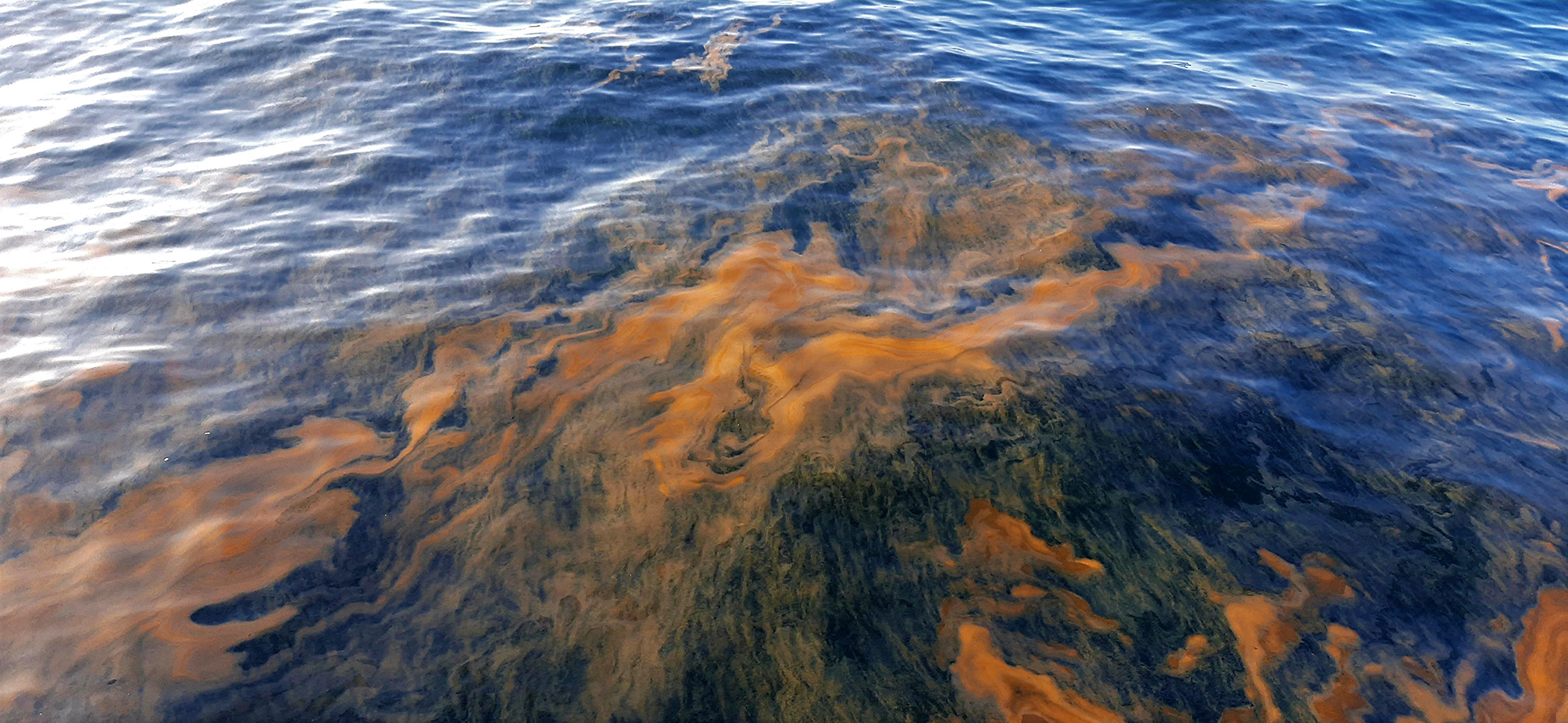Survey in Namibian waters delivers sea sparkles and high quality data on important pelagic fish species

Red tide of Noctiluca scintillans in the Namibian waters. © Saskia Sune Kisting
2 May 2023, Walvis Bay, Namibia – The research vessel Dr Fridtjof Nansen has completed a survey of transboundary pelagic fish species in the waters off the coast of Namibia, one of the most important resources in the area. This effort is part of a continuous process to provide data and information for assessments of these stocks, and scientific advice on how to sustainably manage them.
"During these surveys we collect data on commercially valuable species like sardines and horse mackerel, but also species like anchovy, round herring and mackerel that are important for people’s food and job security, economies, and for marine life," said the cruise leader of the survey, Jens-Otto Krakstad from the Norwegian Institute of Marine Research (IMR).
The survey that lasted for 33 days from March to May, had 26 participants, including 18 local scientists from Namibia and Angola that were joined by the vessel crew, experts and technicians from IMR.
To collect data, advanced acoustic technology is used to target the schools of fish. Once located, samples are hauled aboard using trawls. In the fish lab, catches from the trawl deck are sorted to the species level and individual length, weight, sex, and maturity are recorded for all target species. For Namibia, these are the horse mackerels (Trachurus capensis and T. trecae); chub mackerel (Scomber colias), pilchard (Sardinops sagax), anchovy (Engraulis encrasicolus),and round herring (Etrumeus whiteheadi).
Namibia has large concentrations of jellyfish that were caught frequently in the survey area with increasing densities towards the south. Sometimes there are so many of these in the ocean that it is difficult to trawl. "On our last transect south of Walvis Bay we accidentally caught so many tonnes of jelly that our trawl net busted," Krakstad said, explaining that the weight of the jellyfish was more than 30 tonnes.
The survey results are still in the making and the biomass estimates of the main species will be presented during the post survey meeting to be held later this year. However, the survey confirms earlier findings by the survey with the Namibian research vessel Mirabilis that found that the biomass of horse mackerel is low. Yet, after many years, there are positive signs regarding the status of small some pelagic species after Namibia introduced a fishing moratorium to limit catches of species like the pilchard. If the stock is increasing or not, will be confirmed later in the year when the Mirabilis will carry out a dedicated pilchard survey.
During the survey the local cruise leader Moses Kalola, a fisheries scientist from the Ministry of Fisheries and Marine Resources (NatMIRC) in Namibia, held a presentation on the role of sardines, or pilchards as the Namibians usually call them, explaining how this species has played an important role in Namibia’s economy for many years. Primarily as a food source, but also for the production of fish meal. "After years of being overfished, we have been keeping a close eye on the situation by mapping out the distribution, and we hope to see more pilchards aboard the Nansen in the future!," Kalola said.
Another interesting discovery during the survey was a stream of Noctiluca scintillans that appeared on a Saturday evening. Noctiluca scintillans is a dinoflagellate that can be found in red tides with bioluminescent quality. "It is commonly known as the sea sparkle because of the beautiful blue light that can been seen “sparkling” in the ocean at night," said Sara Zamora Terol (IMR) who took a sample of the organisms together with Anette Amakali (NatMIRC), one of the plankton team members, to study it more closely.
The survey in Namibia was the second and final part of a survey on transboundary pelagics. The first part took place from 24 February to 28 March that studied the abundance and distribution of pelagic fish resources, and the oceanography and plankton community, off the coast of Angola. During both legs, training and hands on experience in marine research techniques to local scientists were delivered, which is another important purpose of all surveys with the Dr Fridtjof Nansen.
Collected data will be presented in a survey report and used for scientific reports and papers, as part of the EAF-Nansen Programme Science Plan. Findings will also contribute to the scientific working groups of the Benguela Current Convention (BCC), through which Angola, Namibia, and South Africa address challenges of the Benguela Large Marine Ecosystem (BCLME) including advice for fisheries management, as well as the FAO and the Fishery Committee for the Easter Central Atlantic (CECAF) that provides scientific advice on the management of small pelagic stocks.
More on the topic:
